Off-road trailers are versatile vehicles designed for rugged adventures‚ offering durability and flexibility․ Their plans provide detailed blueprints for custom builds‚ ensuring functionality and strength for diverse terrains and payloads․
These plans cater to enthusiasts seeking DIY projects‚ enabling the creation of tailored trailers that meet specific needs‚ whether for camping‚ exploration‚ or heavy-duty hauling‚ with precision and reliability․
What Are Off-Road Trailers?
Off-road trailers are specialized vehicles designed for use in challenging terrains‚ such as rugged landscapes‚ muddy paths‚ and uneven surfaces․ Built with durability and flexibility in mind‚ these trailers are ideal for outdoor enthusiasts‚ adventurers‚ and professionals who need reliable transportation in remote areas․ Unlike standard trailers‚ off-road models feature reinforced frames‚ heavy-duty axles‚ and advanced suspension systems to withstand harsh conditions․ They are often equipped with features like high ground clearance‚ water-resistant materials‚ and secure storage solutions․ Off-road trailers can be customized to carry camping gear‚ tools‚ equipment‚ or even small vehicles‚ making them versatile for various purposes․ Their robust construction ensures they can handle the demands of off-road adventures while providing safe and efficient cargo transportation․ Whether for recreational use or practical applications‚ off-road trailers are essential for exploring and working in difficult-to-reach locations․
Why Use Off-Road Trailers?
Off-road trailers offer unparalleled versatility and durability for adventurers and professionals alike․ Their robust design makes them ideal for transporting gear‚ equipment‚ or even vehicles across challenging terrains․ Unlike standard trailers‚ off-road models are built to withstand rough conditions‚ ensuring reliable performance in remote or hard-to-reach areas․ They provide ample storage space‚ keeping cargo secure and protected from the elements․ Additionally‚ off-road trailers are customizable‚ allowing users to tailor them to specific needs‚ whether for camping‚ construction‚ or extreme sports․ Their ability to navigate difficult landscapes makes them indispensable for outdoor enthusiasts seeking freedom and convenience․ By investing in an off-road trailer‚ users gain a practical and durable solution for their adventurous or professional requirements‚ ensuring they can carry everything needed without compromising on safety or efficiency․
Importance of Having a Plan
HAVING a well-structured plan is crucial when building an off-road trailer․ It ensures the project is executed efficiently‚ avoiding costly mistakes and time-consuming rework․ A detailed plan provides a clear roadmap‚ outlining materials‚ tools‚ and steps required․ This helps in staying organized and focused throughout the build process; Additionally‚ a plan allows for customization‚ ensuring the trailer meets specific needs and preferences․ It also aids in budgeting‚ helping to allocate resources effectively and avoid financial overruns․ A plan further enhances safety by adhering to engineering standards‚ making the trailer more reliable and durable․ Finally‚ having a plan increases confidence‚ guiding even novice builders through complex tasks․ Overall‚ a comprehensive plan is essential for a successful and stress-free off-road trailer build‚ ensuring the final product is both functional and long-lasting․
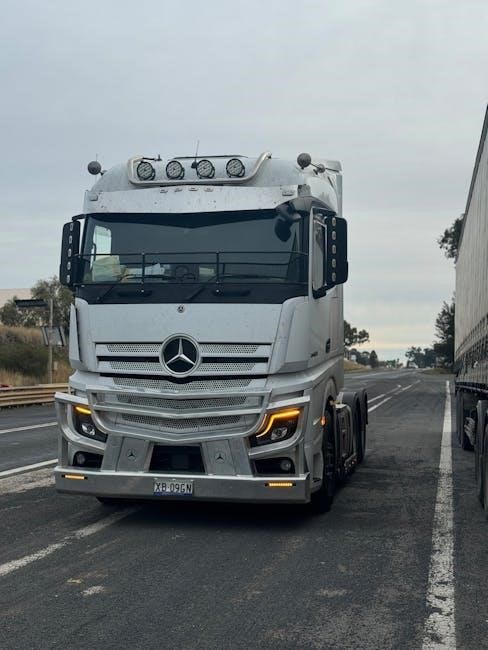
Key Considerations Before Building an Off-Road Trailer
Before constructing an off-road trailer‚ evaluate purpose‚ budget‚ and required skills․ Assessing these factors ensures the trailer meets needs‚ stays within budget‚ and is built safely and effectively․
Purpose and Usage
Defining the purpose and intended usage of your off-road trailer is crucial․ Determine if it will be used for camping‚ hauling heavy equipment‚ or exploring challenging terrains․ This clarity ensures the design aligns with your needs․
Consider the frequency of use and the environments it will encounter․ Trailers for recreational trips may prioritize storage and comfort‚ while those for industrial tasks require durability and payload capacity․
Understanding these aspects helps in selecting the right materials and features‚ ensuring the trailer is both functional and reliable for its intended applications․
Budget and Cost Estimation
Establishing a realistic budget is essential for building an off-road trailer․ Consider the cost of materials‚ tools‚ and labor‚ ensuring it aligns with your financial capacity․
Research the prices of steel‚ axles‚ wheels‚ and other components․ Off-road trailers can range from affordable DIY projects to high-end custom builds‚ so prioritize your needs․
Factor in the cost of specialized tools and equipment‚ such as welders or hydraulic presses‚ which may be necessary for construction․ Labor costs can also add up if you hire professionals for complex tasks․
A detailed plan helps in estimating expenses accurately‚ avoiding overspending‚ and ensuring the project stays within your budget․ Plan wisely to balance quality and affordability for a successful build․
Skills and Tools Required
Building an off-road trailer demands a combination of technical skills and specialized tools․ Welding is a critical skill‚ as it ensures the trailer’s frame and chassis are durable and secure․
Metalworking skills are also necessary for cutting‚ drilling‚ and shaping components․ Additionally‚ knowledge of electrical systems is required for installing lighting and braking systems․
Essential tools include a welder‚ angle grinder‚ drill press‚ and impact wrench․ A well-equipped workspace with jacks‚ axle stands‚ and measuring tools is vital for precision and safety․
While advanced skills can enhance customization‚ basic mechanical aptitude is sufficient for following detailed plans․ Investing time in mastering these skills and gathering the right tools ensures a successful and professional-quality build․
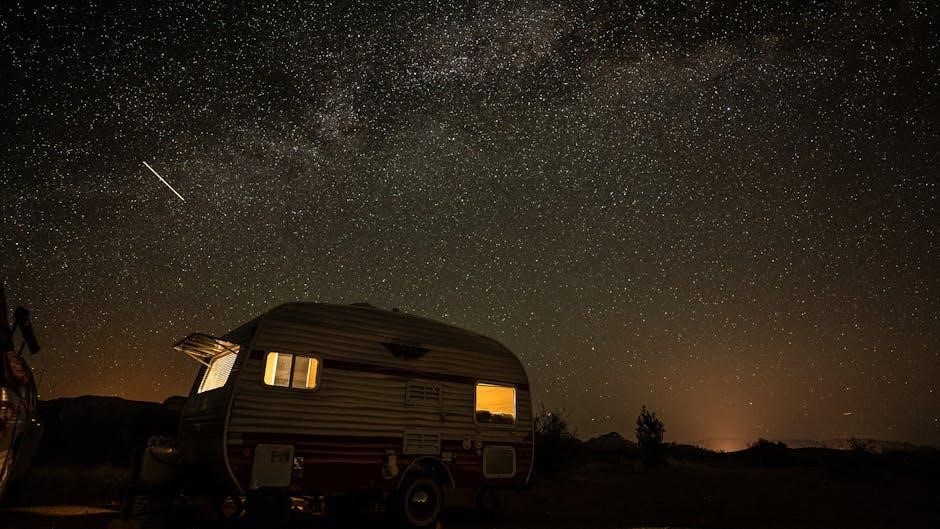
Design and Construction Basics
Off-road trailer design begins with a sturdy frame and chassis‚ supported by a reliable axle and suspension system․ Durable materials and efficient braking systems are essential for withstanding rugged conditions and heavy payloads․
Frame and Chassis Design
The foundation of a durable off-road trailer lies in its frame and chassis․ A sturdy‚ weld-together steel frame is recommended for strength and reliability․ The chassis should be constructed from high-strength‚ low-alloy (HSLA) steel to withstand harsh off-road conditions․ Proper alignment and bracing are crucial to prevent flexing and ensure stability over uneven terrain․ Many DIY plans advocate for a ladder-style frame with crossmembers spaced appropriately to support the trailer’s intended load․ Additionally‚ incorporating a reinforced tongue and heavy-duty axle mounts enhances overall structural integrity․ Ensuring the frame is powder-coated or galvanized protects it from rust and corrosion‚ extending the trailer’s lifespan․ A well-designed frame and chassis are essential for safety and performance‚ making them the critical starting point for any off-road trailer build․

Axle and Suspension System
The axle and suspension system are critical for an off-road trailer’s performance․ A heavy-duty axle with a high load capacity is essential for handling rough terrain and heavy payloads․ Tandem axles are often recommended for improved stability and weight distribution․ The suspension system should be durable‚ with options like leaf springs or coilovers‚ depending on the intended use․ Proper axle alignment and suspension travel ensure smooth navigation over uneven surfaces․ Many off-road trailer plans include adjustable suspension setups to accommodate varying loads and terrains․ Additionally‚ selecting axles with appropriate braking systems and hubs ensures safety and control․ A well-designed axle and suspension system not only enhances the trailer’s off-road capabilities but also protects the frame and cargo from damage caused by impact and stress․
Braking Systems for Off-Road
Braking systems are essential for off-road trailers‚ ensuring safety and control in challenging terrains․ Disc brakes are preferred for their reliability and heat dissipation‚ while drum brakes offer simplicity and lower maintenance․ Electric over hydraulic (EOH) brakes provide excellent performance in off-road conditions‚ combining the efficiency of electric systems with hydraulic actuation․ Proper brake sizing and configuration are critical to handle heavy payloads and steep inclines․ Many off-road trailer plans recommend upgrading to high-performance rotors and pads for enhanced stopping power․ Additionally‚ installing a trailer brake controller ensures synchronized braking with the towing vehicle․ Regular maintenance‚ including cable adjustments and fluid checks‚ is vital to maintain braking efficiency․ A well-designed braking system not only improves safety but also boosts confidence during off-road adventures‚ allowing for smooth and controlled deceleration in any environment․
Material Selection for Durability
When building an off-road trailer‚ selecting the right materials is crucial for durability and performance․ High-strength steel‚ such as mild steel or galvanized steel‚ is often used for frames due to its strength and resistance to corrosion․ Aluminum is a lighter alternative‚ offering excellent corrosion resistance and reducing overall weight․ For the trailer body‚ durable materials like wood or composite panels are popular choices‚ providing insulation and weather resistance․
Off-road conditions demand robust components‚ so materials must withstand harsh environments․ Rust-resistant coatings and waterproofing are essential to protect against moisture and abrasion․ Additionally‚ heavy-duty tires and wheels are selected for their traction and load-bearing capacity․
Choosing the right materials ensures the trailer can endure rough terrains‚ heavy payloads‚ and varying weather conditions‚ making it a reliable companion for off-road adventures․ Proper material selection also extends the trailer’s lifespan‚ reducing maintenance and repair costs over time․

Features to Include in Your Off-Road Trailer
Off-road trailers should include storage compartments‚ electrical systems‚ and cargo tie-downs for organization and security․ Adding lighting and braking systems enhances safety‚ while waterproof materials protect against harsh environments․
Customizable features like foldable tables or bedding storage can improve comfort during adventures․ Ensuring all components are durable and weather-resistant is key for long-term reliability and performance in rugged conditions․
Storage Solutions
Effective storage solutions are essential for off-road trailers to keep gear organized and accessible․ Consider adding waterproof compartments‚ slide-out drawers‚ and overhead racks to maximize space․
Incorporate customizable shelving and cargo nets to secure items like tools‚ camping equipment‚ and spare parts․ Durable‚ weatherproof materials ensure your belongings remain protected in harsh conditions․
Additionally‚ including external storage boxes or roof-mounted cargo carriers can provide extra space for bulky items like tents or recovery gear․ Properly designed storage systems enhance functionality and convenience during off-road adventures․
Electrical and Lighting Systems
A well-designed electrical and lighting system is crucial for off-road trailers‚ ensuring reliability and functionality in remote areas․ Start with a heavy-duty battery and solar panel setup to provide consistent power․
Incorporate waterproof wiring and connectors to protect against dust and moisture․ LED lighting is ideal for its brightness and energy efficiency‚ with options for interior and exterior setups․
Include USB charging ports and power outlets for devices‚ and consider a dual-battery system for redundancy․ Proper circuit protection and fuses are essential for safety․ Ensure all components are securely mounted and accessible for maintenance․ A reliable electrical system enhances comfort and convenience during off-road adventures‚ while durable lighting ensures visibility in challenging conditions․
Cargo Tie-Downs and Security
Secure cargo tie-downs are essential for off-road trailers to ensure safe transportation of goods over rough terrains․ Use heavy-duty D-rings‚ E-tracks‚ or recessed tie-down points for maximum stability․
Ratchet straps or rope tie-downs with proper tensioning prevent shifting during movement․ Protect fragile items with padding or covers to avoid damage․
For added security‚ install locking mechanisms on compartments or use anti-theft hitch pins to deter theft․ Consider reinforced doors and draw latches for storage compartments․
Additionally‚ integrate a reliable locking system for cargo boxes or compartments․ Properly securing cargo ensures safety and prevents loss during off-road adventures․

Safety and Legal Requirements
Ensuring compliance with safety standards and legal regulations is crucial for off-road trailers․ Adhere to weight limits‚ braking systems‚ and lighting requirements․ Obtain proper registrations and inspections․ Stay informed on local laws and insurance needs․
Safety Standards for Off-Road Trailers
Adhering to safety standards is essential to ensure the reliability and performance of off-road trailers․ These standards cover various aspects‚ including frame durability‚ axle strength‚ and braking efficiency․ Proper materials must be selected to withstand harsh environments‚ while electrical systems should be securely installed to prevent failures․ Trailers must also meet weight distribution guidelines to maintain stability on uneven terrains․ Additionally‚ lighting systems should be compliant with regulations to enhance visibility and safety during low-light conditions․ Regular inspections are recommended to identify and address potential issues before they become critical․ By following established safety standards‚ builders can create trailers that are both durable and safe for off-road adventures․
Legal Regulations and Registrations
Off-road trailers must comply with legal regulations to ensure lawful operation․ These regulations vary by region but typically include requirements for trailer registration‚ titling‚ and vehicle identification number (VIN) verification․ Weight limits‚ axle loads‚ and braking systems must meet local and national standards․ Additionally‚ trailers may need to pass safety inspections to remain roadworthy․ Environmental regulations‚ such as emissions standards‚ may also apply․ Owners should obtain the necessary permits and licenses before operating their trailers․ Proper documentation‚ including insurance‚ is often mandatory․ Failure to comply with these regulations can result in fines or penalties․ Always check with local authorities to ensure your off-road trailer adheres to all legal requirements before use․

The Build Process
Building an off-road trailer requires precise planning‚ adherence to detailed plans‚ and the use of essential tools․ Step-by-step assembly ensures a sturdy‚ reliable‚ and safe final product․
Tools and Equipment Needed
Building an off-road trailer requires a variety of tools and equipment to ensure a successful and durable construction․ Essential tools include a MIG welder for joining metal frames‚ an angle grinder for cutting and smoothing metal edges‚ and an impact wrench for tightening bolts and nuts․ A drill press and hand drills are necessary for precise hole drilling‚ while a saw or plasma cutter is needed for cutting metal components․ Additionally‚ measuring tools like a tape measure and square are crucial for accurate cuts and alignments․ Safety gear‚ such as gloves and goggles‚ is a must to protect against hazards․ Specialized tools like a hydraulic press may be required for specific tasks‚ such as pressing in bearings or axles․ Having the right tools ensures a professional-grade build and minimizes the risk of errors during the assembly process․
Step-by-Step Assembly Guide
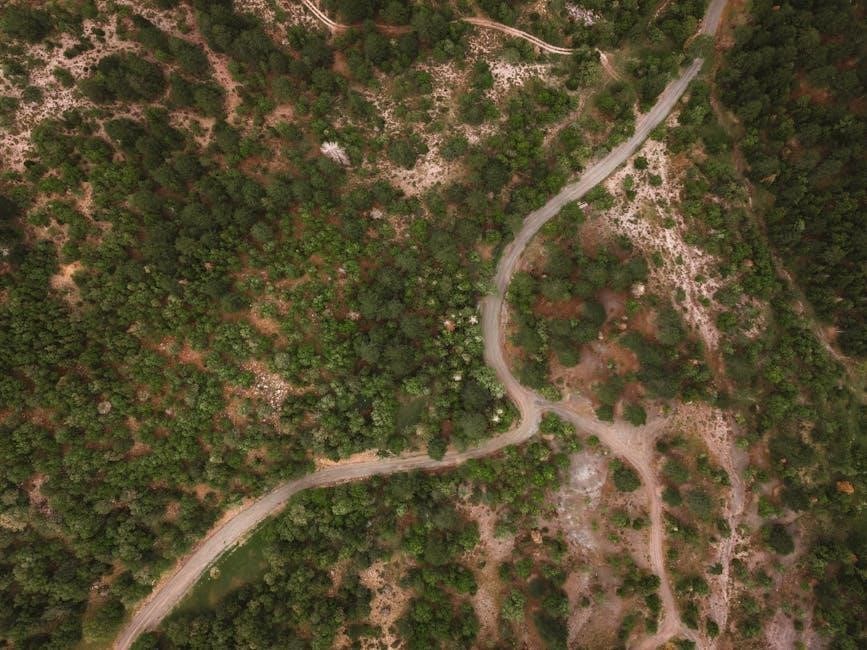
Assembling an off-road trailer involves a systematic approach to ensure durability and functionality․ Begin by gathering all pre-cut and pre-drilled components‚ such as the frame‚ axle‚ and suspension parts․ Start with the frame assembly‚ welding the chassis together according to the blueprint․ Next‚ attach the axle and suspension system‚ ensuring proper alignment and secure fastening․ Install the braking system‚ connecting it to the trailer’s wiring harness․ Proceed to mount the wheels and tires‚ followed by the flooring and side panels․ Finally‚ add storage solutions‚ tie-down points‚ and lighting systems․ Conduct a thorough safety check‚ testing the brakes and electrical components before loading cargo․ Follow the plan meticulously to ensure a sturdy and reliable off-road trailer․
Troubleshooting Common Issues
When building an off-road trailer‚ common issues like frame misalignment‚ wiring malfunctions‚ or brake system faults may arise․ Start by checking the frame for accuracy‚ ensuring all welds are secure and evenly spaced․ For electrical problems‚ inspect connections for corrosion or damage‚ and verify that all lights and brakes are properly wired․ Brake issues often stem from incorrect installation or air leaks in the system; consult your plan for proper setup and test the brakes thoroughly․ Addressing these problems early ensures reliability and safety․ Regular inspections and adherence to the assembly guide can prevent many of these challenges․ If unsure‚ consider consulting a professional or seeking guidance from off-road trailer communities to resolve complex issues effectively and maintain your trailer’s performance in rugged conditions․
Testing and Maintenance
Regular inspections are crucial to ensure your off-road trailer’s durability․ Check tires‚ brakes‚ and suspension before trips․ Lubricate moving parts and verify electrical connections․ Test towing stability and braking efficiency under various conditions for optimal performance and safety․
Prototyping and Initial Testing
Prototyping is a critical phase in building an off-road trailer․ Start by creating a scale model or mockup to visualize the design and identify potential issues․ Use affordable materials like cardboard or 3D printing to test the layout and functionality without heavy investment․ Conduct initial testing on flat surfaces to assess stability and maneuverability․ Check the trailer’s weight distribution and how it responds to towing․ Once satisfied‚ proceed to off-road simulations‚ testing suspension flexibility‚ axle strength‚ and braking systems on uneven terrain․ This step ensures that the final product is both durable and reliable for challenging environments․ Regularly document findings to refine the design before moving to the full-scale build‚ maximizing efficiency and safety․
Regular Maintenance Tips
Regular maintenance is essential to ensure your off-road trailer remains in optimal condition․ Start by inspecting the axle and suspension systems for wear and tear‚ lubricating moving parts‚ and checking tire pressure․ Clean and grease the hitch and coupler to prevent rust and ensure smooth towing․ Inspect the frame and chassis for any damage or corrosion‚ addressing issues promptly․ Check all electrical connections and lighting systems to ensure reliability․ Test the braking system regularly and replace worn brake pads․ Secure all cargo tie-downs and ensure they are in good condition․ Store the trailer in a dry‚ sheltered area when not in use to protect it from the elements․ Follow a routine maintenance schedule to extend the trailer’s lifespan and maintain its performance in challenging off-road conditions․
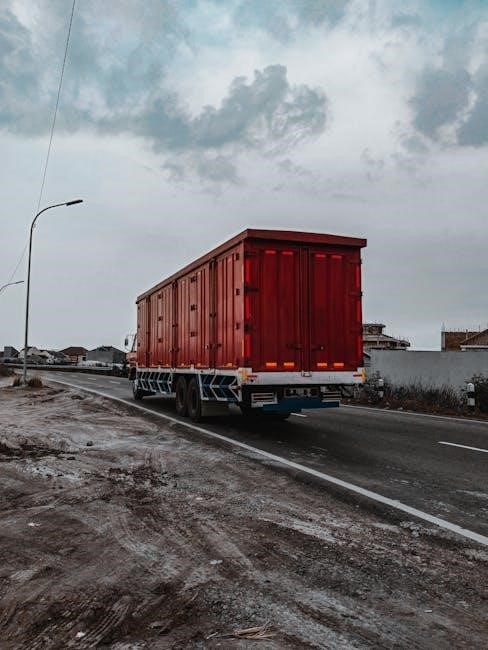
Advanced Modifications
Enhance your trailer with advanced modifications like automation systems‚ suspension upgrades‚ and custom storage solutions․ These upgrades improve performance‚ durability‚ and functionality for serious off-road enthusiasts and demanding adventures․
Customizing Your Trailer for Specific Needs
Customizing your off-road trailer allows you to tailor it to your unique requirements‚ ensuring optimal performance and convenience․ Whether you’re planning camping trips‚ expedition adventures‚ or heavy-duty hauling‚ modifications can enhance functionality․ For camping enthusiasts‚ adding storage compartments‚ water tanks‚ and electrical systems is essential․ For those needing heavy-duty capabilities‚ reinforcing the frame and upgrading the axle system can handle larger payloads․ Additionally‚ integrating advanced lighting and braking systems improves safety and control․ By incorporating specific features like cargo tie-downs‚ you can secure your gear effectively․ Customization ensures your trailer adapts to your lifestyle and adventure goals‚ making every journey more efficient and enjoyable․ Utilize detailed plans to guide your modifications‚ ensuring every upgrade aligns with your vision and needs․
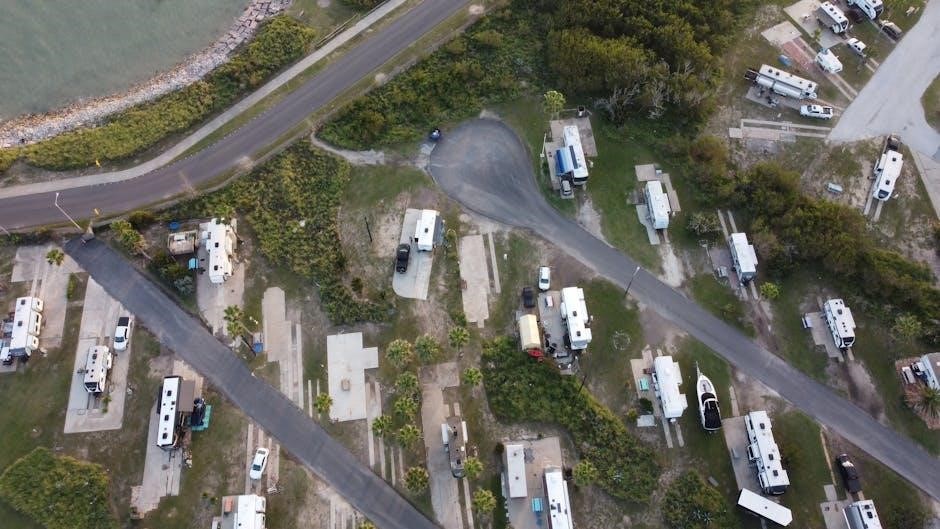
Additional Resources
Find comprehensive guides and PDFs on off-road trailer plans through official websites‚ forums‚ and platforms like TextRanch․ These resources offer detailed DIY instructions‚ blueprints‚ and expert tips for enthusiasts․
Where to Find Off-Road Trailer Plans PDF
Off-road trailer plans in PDF format are widely available online‚ offering detailed blueprints and instructions for enthusiasts․ Websites like TextRanch provide comprehensive guides‚ while forums and specialized platforms share DIY tutorials․ Many manufacturers offer free PDF downloads of their plans‚ catering to both beginners and experienced builders․ Additionally‚ online marketplaces and communities like Reddit often host threads where users share their custom designs․ For those seeking professional-grade plans‚ paid resources on platforms like Etsy or Ebay are ideal․ YouTube channels dedicated to off-road adventures also provide video tutorials and downloadable PDFs․ These resources ensure that builders can access the tools and knowledge needed to construct durable‚ functional trailers tailored to their specific needs‚ whether for camping‚ exploration‚ or heavy-duty hauling․ Always verify the source for reliability and safety standards․
